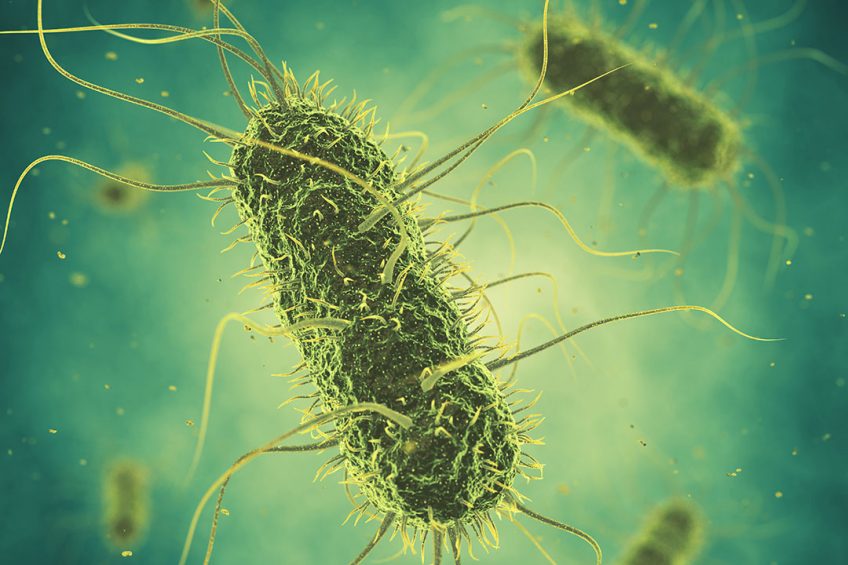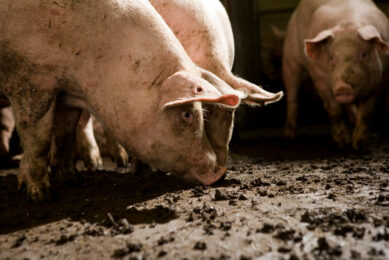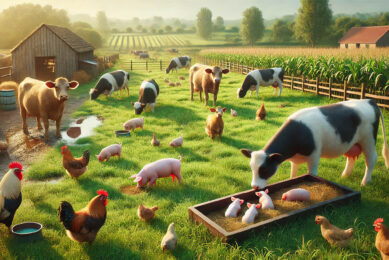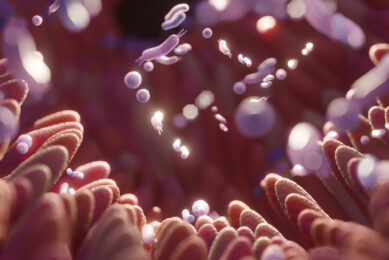Empowering gut health to control Salmonella

Salmonella can cause morbidity and mortality in humans and livestock. Research shows empowering natural defence mechanisms in broilers’ guts can improve upon conventional feed and/or water acidification approaches to control enteric pathogens.
As the primary infection route occurs through faecal-oral transmission, the hygiene of raw materials, poultry feed and drinking water is a prerequisite to prevent the vertical and horizontal spread of Salmonella. Organic acids have long been used as antimicrobial agents in poultry feeds and drinking water to support hygiene. Adding low pKa short-chain fatty acids (SCFA) like formic, acetic and propionic acid to feed helps to deliver a bacteriostatic and bactericidal impact. These SCFAs strengthen the low pH barrier of the upper (acidic) part of the gut. As Salmonella must survive this acidic environment, strengthening this area can reduce the risk of Salmonella colonising and invading the lower gut.
Some Salmonella spp have developed an acid tolerance response via the synthesis of specific acid shock proteins. Strengthening natural barriers and obstacles that Salmonella encounter travelling through the gut can overrule acid tolerance (Figure 1).
Figure 1 – Intestinal defence mechanisms against Salmonella.
Below are 4 ways to steer gut health and defend against enteric Salmonella .
 Inhibit adhesion
Inhibit adhesion
Salmonella bacteria surviving the acidic upper digestive tract proceed to the lumen of the lower gut, where intestinal epithelial and immune cells provide a protective barrier. Via fimbrial and nonfimbrial cell wall molecules, so-called adhesins, Salmonella can bind to and interact with the host’s intestinal tract. As Salmonella’s colonisation and invasion is initiated by adhesion to intestinal epithelial surfaces and cell lines and to intestinal mucins, inhibiting adhesion can reduce its pathogenesis. Mannose and mannose-based oligosaccharides have proven in vitro binding affinity for and inhibitory properties to some fimbrial adhesins present on enteric Salmonella. Indeed, in vivo trials have shown that broiler diets supplemented with hydrolysed copra meal, a natural source of β-1,4-mannobiose, reduced Salmonella shedding and improved Salmonella clearance after infection.
 Modulation of microbiota and immune response
Modulation of microbiota and immune response
Salmonella serotypes’ ability to survive and proliferate in birds’ gastrointestinal tracts is related to the immune status of the host and microorganisms present.
A broiler’s microbiome is complex and interactive. To colonise, pathogens entering the gut must survive a hostile environment created by fermentation activities of the endogenous microflora, compete with endogenous microflora for nutrients, and make contact with enterocytes.
High pKa SCFA and medium chain fatty acids (MCFA) can create challenging conditions in the non-acidic part of the intestinal tract. Combined with prebiotic components, these acids support a more diverse and competitive microbial ecosystem to act as a barrier against Salmonella colonisation.
Endogenous microflora are essential for immunological development, especially in early life. Prebiotic components contribute to a resilient microbiota and modulate the host’s immune response. β-1,4-mannobiose supplementation has been shown to prevent Salmonella infection in broilers by increasing production of immunoglobulin A (IgA).
 Strengthen gut barrier function
Strengthen gut barrier function
Beyond the chemical and microbiological obstacles that Salmonella encounter through the GIT, the innate physical barrier associated with the epithelial cell monolayer is also important. Feed management is crucial to maintaining the intestinal barrier’s integrity. Early feed intake, feed quality parameters including hygiene, mycotoxin risk management and texture, and feed quantity can affect gut integrity. Poor management or lax biosecurity can weaken or destroy the gut barrier.
The intestinal integrity demands tight junctions and a thick mucus layer. Butyrates have been reported to affect gut barrier function by increasing the formation of mucin glycoproteins and the thickness of the mucous layer. Butyrates also increase the expression of tight junction proteins that improves protection against luminal agents and reduces potential translocation of Salmonella.
 Reduce virulence response
Reduce virulence response
Salmonella may develop invasive and systemic infections in a small percentage of cases. Generally, Salmonella’s infection potential depends on the ability to encode and express a combination of virulence genes via which the host’s natural defence mechanisms can be bypassed. Most of these virulence genes are clustered in Salmonella pathogenicity islands.
Salmonella’s acid tolerance is important to its pathogenesis. Specific short and medium chain fatty acids can also down-regulate Salmonella’s virulence gene expression. In vitro and in vivo experiments have shown that propionic, butyric and also caproic and caprylic acid alter the gene expression for invasion and virulence. Applied via a slow release matrix, these organic acids can decrease Salmonella colonisation and shedding.
A multifunctional concept within an integrated approach
Trouw Nutrition’s global research studies substantiate practical, functional concepts. Fysal Fit-4 is a synergistic blend of ingredients (β-1,4-mannobiose, SCFAs, MCFAs and micro-encapsulated butyrates) that reduces Salmonella colonisation and invasion by empowering natural defence mechanisms.
In a recent broiler study using seeder birds infected with S. Heidelberg, effects of water acidification (WA) alone or in combination with Fysal Fit-4 were tested.
- On day 7, 4 days after infected seeders were included in pens, both treatment groups (WA alone and WA in combination with Fysal Fit-4) showed significantly lower caecal Salmonella counts in non-seeder birds compared to the control group (-log 1.02 CFU/g and -log 2.36 CFU/g; p <0.0001).>
- On day 14, 11 days after the inclusion of infected seeders, caecal Salmonella counts in non-seeder birds were still reduced by log 1.0 CFU/g but only in birds receiving the combination treatment (Figure 2).
This shows that an efficient Salmonella control concept should go beyond feed and water acidification to empower natural defence mechanisms in the gut.
Feed and water additives, vaccination and medication programmes can all contribute to reduced Salmonella pressure when supported by proper risk analysis, a solid sampling and analysis plan and best hygiene practices. This is the essence of Trouw Nutrition’s integrated feed, farm and health approach for reducing Salmonella pressure across the supply chain.
References available upon request
Authors:
Bart D‘heer, Global Programme Manager Salmonella Control and Ellen Hambrecht, Global Product Manager, Trouw Nutrition







